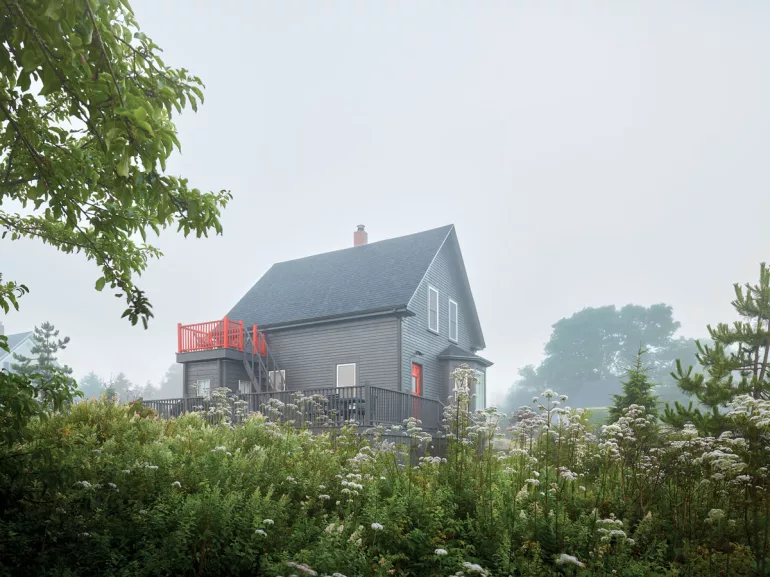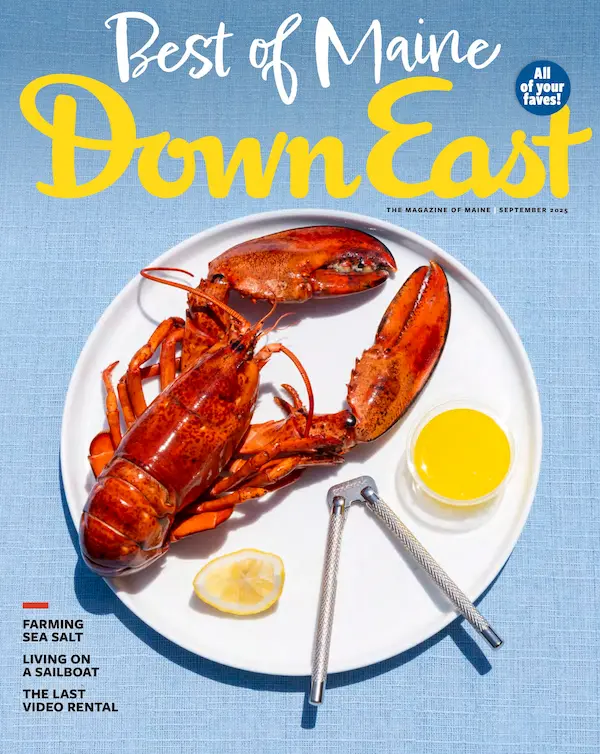By Laura Wallis
Photos by Jared Kuzia
From the May/June 2019 issue of Maine Homes by Down East
Perhaps more than any other children’s author, Robert McCloskey captured the nostalgic, simpler-times spirit of mid-century Maine in his work. One Morning in Maine and Blueberries for Sal are touchstones for many residents, and for Rich Rose, who hails from Yarmouth and spent summers in Machiasport, they still evoke fond memories of home. So much so, that when he and his wife, Julie, decided to renovate a summerhouse on Beals Island, they made McCloskey their muse.
This stretch of Washington County — Beals, Jonesport, Machiasport — still retains much of its 50s -and 60s-era appeal, Rich notes. Dotted with quaint fishing villages and outside the tourist crush, the area’s vibe can feel as leisurely as an afternoon in Mr. Condon’s store. For Julie, who grew up in the Boston suburbs, the pace “was a bit of a culture shock at first, but I grew to love it. Everywhere you go, people are sitting, telling stories. Every car that drives by, someone waves.”
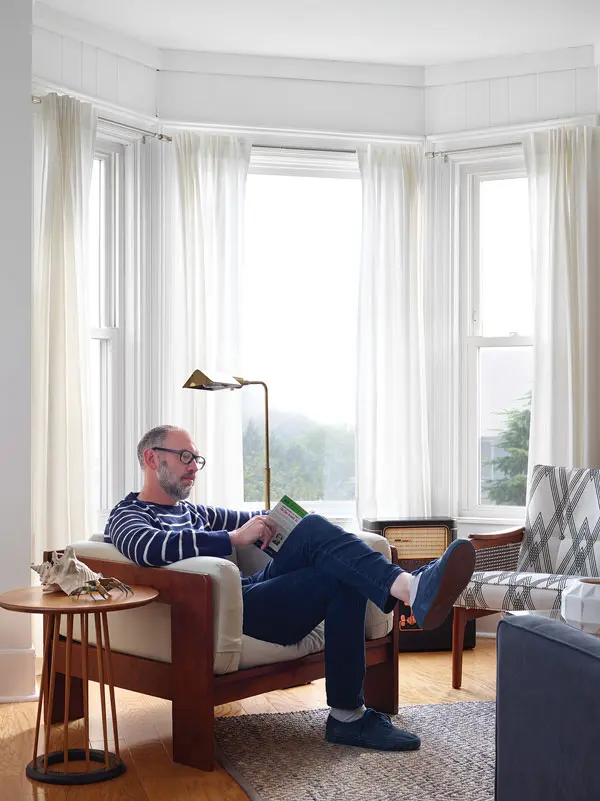
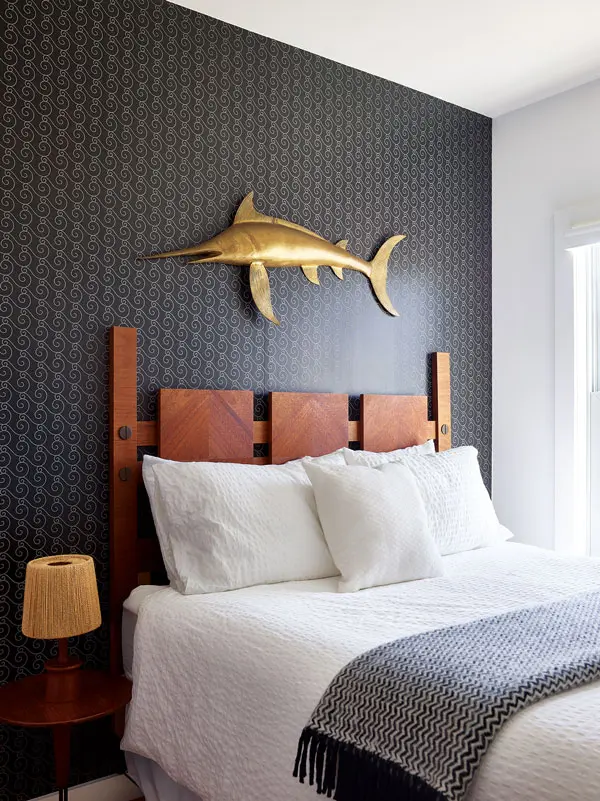
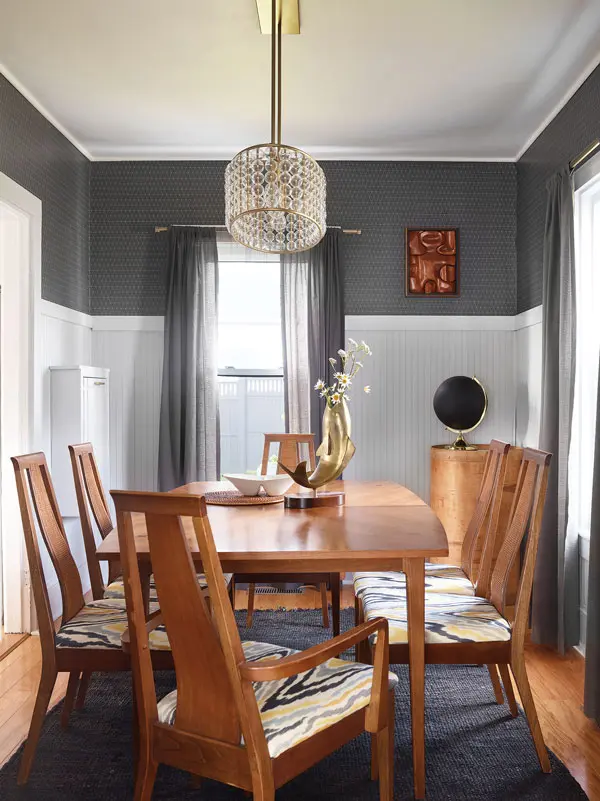
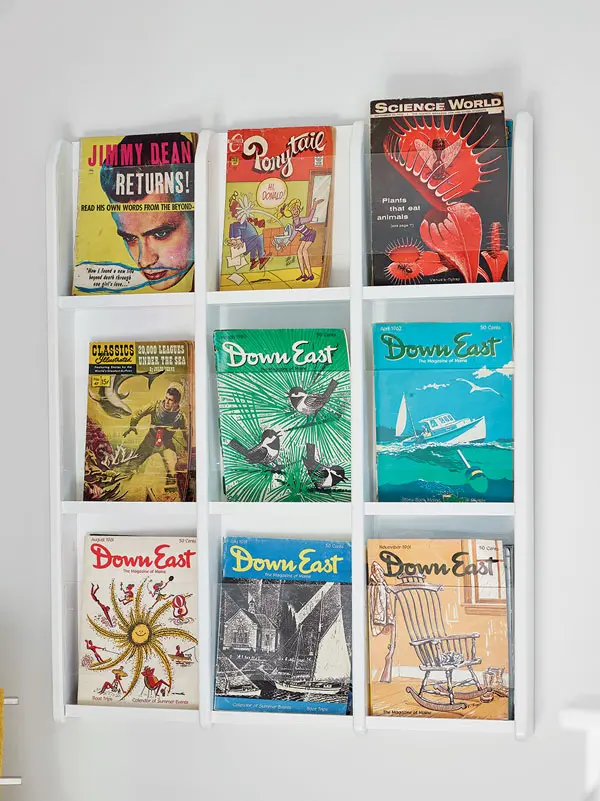
When the Rhode Island couple found their circa 1890 cottage, dubbed “Bridge View,” it was a “plain little box.” But Rich, a Rhode Island School of Design professor and partner at a graphic design studio, and Julie, principal at an architectural lighting firm, saw potential. A peek under faded mint-green vinyl siding revealed good wood clapboards, and they knew the view of Western Bay and the Beals Island Bridge would be stunning from a raised vantage point. Their solution — a two-tier deck, the upper portion built over an existing mudroom — also added architectural oomph. So did new steel-gray exterior paint accented with brilliant orangey red on the front door and upper deck railing — a palette inspired by buildings such as the dark-gray-green Windsor Chairmakers showroom in Lincolnville and crimson blueberry barrens, as well as homes Julie admired in Iceland. “If you were to pair mid-century Maine with Scandinavian style and a little hygge [the Danish notion of coziness and simple pleasures],” Rich says, “that’s how we put things together.”
Inside, they worked with Machias contractor Manny Vazquez to gut the upstairs, replacing sagging walls and ceilings and installing wood floors over old painted plywood. Downstairs, they painted dark wood paneling and cabinetry white, and juxtaposed existing Formica kitchen countertops with reclaimed wood shelves showcasing vintage kitchenware, such as a mid-century Penguin ice bucket and a Bauhaus candy jar. A wall-mounted (nonfunctional) crank telephone and Hoosier cabinet doors — similar to ones spotted in Sal’s kitchen — above the fridge pick up the wood tones and subtle retro theme.



Clockwise from left: The Roses’ living room combines mid-century-style pieces, such as Boston Interiors’ Draper sofa, with vintage ones, like a Gerald Thurston brass lamp, coffee table from Ellsworth’s Old Creamery Antique Mall, and painting from Ray Foster Antiques & Fine Art in Machias. Milo Baughman brass-and-glass nesting tables from Old Creamery Antique Mall hold a working rotary phone found at The Talbot House Inn’s antiques shop in East Machias. The nearby art trio consists of a portrait scored on Etsy, Alex Katz in Maine, nabbed at Camden’s Sugar Tools, and a needlepoint from Ray Foster Antiques. Isola and Julie enjoy breakfast at the vintage workbench that serves as a kitchen island — a Portland Architectural Salvage find.
Other rooms, meantime, have their own nods. A framed antique quilt with a surprisingly mod, graphic appeal and a ceramic bust of a yellow-coated sea captain that conjures McCloskey’s Burt Dow animate the living room, which is furnished with a Mad Men-esque tufted sofa and futuristic wood-and-glass coffee table. A rack of colorful vintage magazines (including, ahem, several issues of Down East) enlivens the upstairs hallway. And 4-year-old daughter Isola’s room is filled with vintage board games, like Battleship and Regatta, and McCloskey books, which the couple only read to her in Maine, so she can create her own sentimental connections.
Looking at Isola and Julie in their kitchen — a scene reminiscent of McCloskey’s famed canning illustration — it appears the Roses have not only captured the essence of the author’s aesthetic, but also the pleasure he took in workaday affairs. The family might spend their day picking blueberries, strolling the fishing village, or “just sitting and looking out over the water,” Julie says. And that alone might be the stuff of an adventure — or a story to pass down through the generations.



